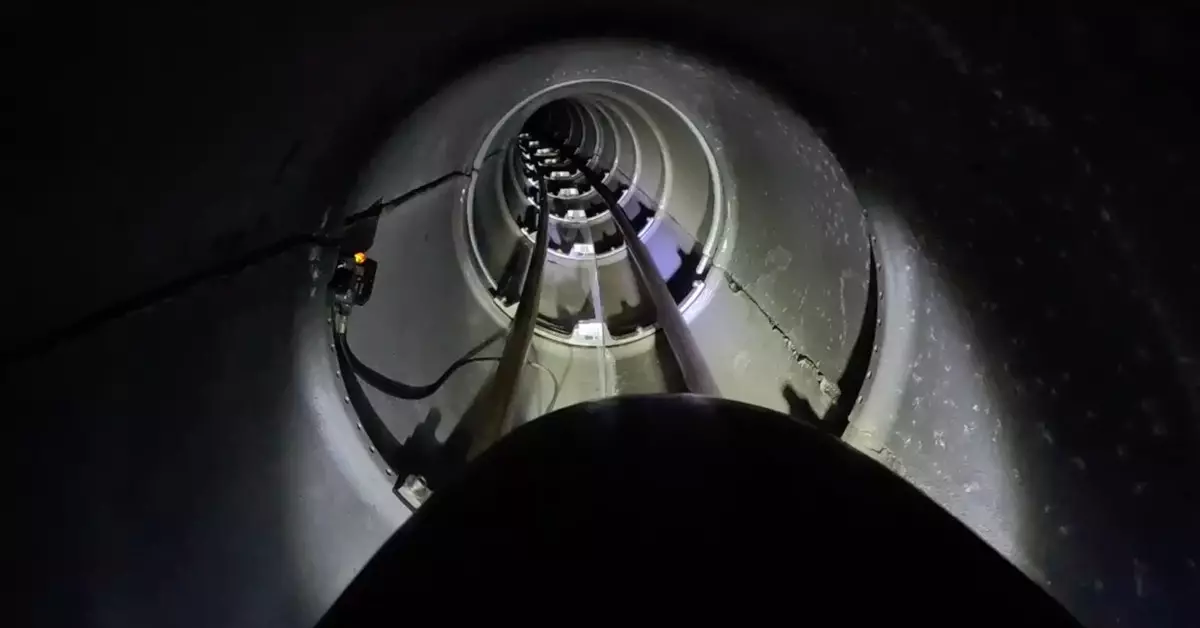Elon Musk’s concept of the hyperloop, introduced in his 2013 white paper, promised a transformative approach to transportation, envisioning aluminum capsules propelled through low-pressure tubes at astonishing speeds. With potential velocities reaching 760 miles per hour, the hyperloop aimed to revolutionize how passengers and goods are transported across urban landscapes, potentially altering the fabric of daily life. However, despite its ambitious inception, the hyperloop has faced significant setbacks, including a series of financial failings and technical challenges that have led many to declare its vision unfeasible.
Scale Model Tests: A Ray of Hope?
Despite the grim outlook surrounding full-scale hyperloop projects, recent developments in Switzerland have reignited some optimism within the industry. A collaborative effort involving the Federal Institute of Technology Lausanne (EPFL), the School of Business and Engineering Vaud (HEIG-VD), and Swisspod Technologies is currently executing tests on a 1/12th scale model of the hyperloop. Their circular test track, although modest in scope at just 120 meters, has reported a noteworthy achievement by traveling 11.8 kilometers at a consistent speed of 40.7 kilometers per hour.
While these results may sound elementary compared to Musk’s original aspirations, the Swiss team asserts that their findings could translate to real-world distances and speeds. They claim their current experiments can reflect a potential journey of nearly 88 miles, with speeds that could reach up to 303 miles per hour in an operational hyperloop—a claim that, if validated, could redefine inter-city travel.
Nevertheless, skeptics remain skeptical about the hyperloop’s feasibility despite these increments. A significant array of startups has retreated from the hyperloop scene, primarily due to financial mismanagement and logistical obstacles. Critics have labeled the hyperloop as “vaporware,” a concept that exists mainly in theory rather than practice. Furthermore, the still-nascent regulatory environment surrounding such transportation innovations complicates the prospect of deployment, with many wondering whether it represents a “utopian vision” or an impossible endeavor.
For those in the field of advanced transportation, the current initiative of a scale model test may not equate to true progress. While the Swiss team members remain hopeful, the reality of the situation is that, despite their success in testing a small-scale model, transitioning to a functional full-scale hyperloop remains a monumental hurdle.
Interestingly, Swisspod’s CEO Denis Tudor has expressed optimism for his team’s future initiatives, revealing plans to test freight transportation soon and even expand their testing capabilities in the United States. The urgency of these tests stems from a desire to validate the system further, not just for freight, but also for passenger use. Tudor’s comments suggest that the group is focused on demonstrating the practicality of hyperloop technology, asserting that this would be an essential step towards revolutionizing connections, commute patterns, and business operations.
The ambitions outlined by the Swiss team are commendable; however, they do bring into focus the poignant question—what does it truly take to turn a concept like hyperloop into reality? The existing models of transportation have established norms, frameworks, and regulatory standards that must be navigated thoughtfully.
The Current Landscape of Transportation Innovation
Meanwhile, it’s essential to note the broader context in which these hyperloop developments are occurring. Traditional transportation methods, particularly those spearheaded by technology companies like Musk’s Boring Company, are advancing but in a different direction—focusing more on solutions like tunneling for electric vehicles rather than the hyperloop dream. This observation underscores the notion that while Innovative solutions are emerging, the future of transportation may be evolving in a manner distinct from Musk’s initial concept.
The endeavor to establish the hyperloop as a viable transportation system is fraught with challenges that cannot be overlooked. The incremental progress demonstrated by projects like the one in Switzerland provides a flicker of hope, yet structural and societal complexities must be addressed before this vision can be realized. The next steps are critical, not only for the dream of hyperloop but for innovation in transportation as a whole. Whether this ambitious project stands the test of time or fades into the annals of ambitious dreams is yet to be determined.


Leave a Reply